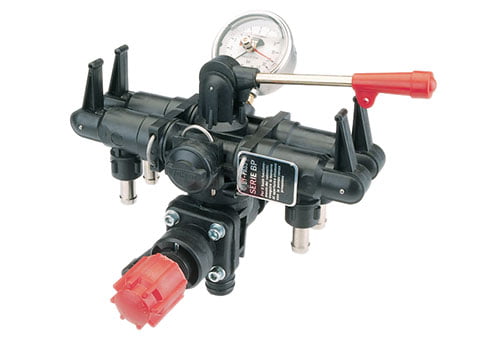
Maximize Power Financial Savings and Comfort With Advanced Building Automation Controls
In the world of contemporary architecture and facility monitoring, the assimilation of sophisticated building automation regulates stands as a critical innovation. By taking advantage of the power of automation, structures can adapt, react, and progress in ways that were as soon as inconceivable.
Energy Performance Advantages
Energy effectiveness advantages can substantially lower energy consumption and functional expenses in structures. Energy-efficient systems, such as advanced building automation controls, can enhance the usage of resources like air conditioning, heating, and lighting, leading to reduced power expenditures over time.
Furthermore, boosted power efficiency can lengthen the life expectancy of building devices and systems. By operating more effectively, a/c systems, lighting fixture, and various other building components experience much less deterioration, leading to lowered upkeep and substitute expenses. Additionally, energy-efficient buildings typically regulate higher home worths and rental rates, giving long-lasting economic benefits to proprietors.
Furthermore, power efficiency can boost resident convenience and productivity. Effectively controlled interior atmospheres with ideal lights and thermal conditions develop a more helpful and enjoyable workspace, leading to enhanced staff member contentment and performance. Generally, the energy effectiveness benefits related to advanced building automation controls are complex, including cost financial savings, environmental stewardship, and owner health.
Improved Convenience Control
Enhancing comfort control in building settings requires an advanced integration of innovative automation systems for optimum occupant wellness. By making use of sophisticated structure automation controls, centers can tailor the indoor setting to satisfy the specific requirements and preferences of passengers. These systems make it possible for specific guideline of temperature, illumination, and air flow, producing a efficient and comfortable environment. Passenger complete satisfaction and performance are very closely connected to thermal comfort, making it important to have systems in area that can adapt to changing problems in real-time.
Improved convenience control goes past standard temperature level changes. It consists of functions such as tailored setups, occupancy sensors, and all-natural light usage to create a responsive and dynamic setting. By integrating these advanced controls, structures can not just enhance comfort but also improve power effectiveness by enhancing system operations based on real occupancy and use patterns. Ultimately, focusing on occupant convenience through advanced automation systems leads to a more enjoyable and much healthier indoor atmosphere.
Functional Efficiency Improvements

Additionally, the implementation of real-time surveillance and analytics devices allows building drivers to determine power inadequacies and operational anomalies quickly. By continuously checking power usage patterns and system efficiency metrics, modifications can be made in real-time to optimize power usage and ensure peak functional performance. control valves. In addition, incorporating need reaction strategies into building automation controls can better boost functional efficiency by dynamically adjusting power use based upon grid problems and pricing signals
Indoor Climate Optimization
Efficient indoor climate optimization is a fundamental facet go of structure automation controls, ensuring residents' comfort and wellness while making the most of energy cost savings. By using sophisticated sensors and controls, developing automation systems can constantly check and readjust temperature level, moisture levels, air high quality, and ventilation to produce an ideal indoor environment. Maintaining comfy and consistent conditions not only improves resident fulfillment however also boosts performance and total wellness.
Indoor environment optimization likewise plays a vital function in energy performance. By fine-tuning ventilation, cooling, and heating systems based on real-time data and occupancy patterns, building automation controls can significantly reduce power usage - control valves. Implementing techniques such as demand-controlled ventilation and thermal zoning can aid lessen energy waste while guaranteeing that each area of the building obtains the necessary conditioning.

Sustainable Environment Development
Structure automation regulates not just enhance interior environment conditions for power effectiveness and resident convenience but additionally lay the foundation for creating a lasting environment with strategic monitoring of resources and systems. By integrating advanced structure automation modern technologies, check here such as sensing units, actuators, and smart software program, centers can readjust and keep track of power usage in real-time to minimize waste and minimize their carbon footprint. These systems allow anticipating maintenance, identifying possible concerns before they intensify and enhancing tools efficiency to boost long life and efficiency.
Moreover, lasting environment development extends past energy management to encompass water conservation, waste decrease, and indoor air quality improvement. Structure automation controls can manage water usage, detect leaks, and ensure proper garbage disposal techniques, adding to general sustainability initiatives. Furthermore, by controlling and checking air flow and purification systems, these innovations enhance owner health and efficiency while reducing power consumption connected with HVAC operations.
Final Thought
In final thought, advanced building automation controls deal considerable benefits in regards to energy cost savings, comfort control, operational performance, interior environment optimization, and developing a sustainable environment. By carrying out these controls, buildings can achieve ideal performance while reducing power intake and boosting passenger convenience. It is evident that using sophisticated automation modern technology is important in enhancing building efficiency and producing a much more lasting future.
Energy effectiveness benefits can substantially minimize power consumption and operational costs in buildings. Overall, the energy efficiency advantages linked with innovative structure automation controls are complex, encompassing cost next savings, ecological stewardship, and resident wellness.
Additionally, including need feedback techniques right into building automation controls can further boost operational performance by dynamically adjusting energy usage based on grid conditions and pricing signals.
Building automation controls not only optimize indoor environment problems for power effectiveness and passenger comfort yet additionally lay the structure for producing a lasting environment through critical monitoring of systems and sources.In conclusion, advanced structure automation controls deal significant benefits in terms of power savings, comfort control, operational efficiency, indoor climate optimization, and creating a sustainable setting.
Comments on “Picking the Right Control Valves: An Overview to Optimum System Efficiency”